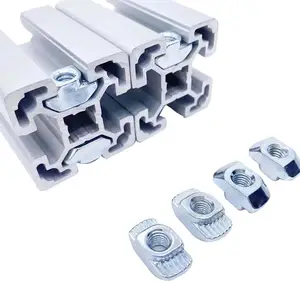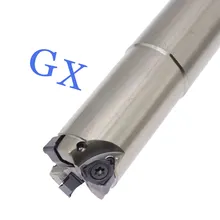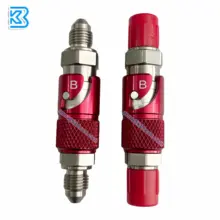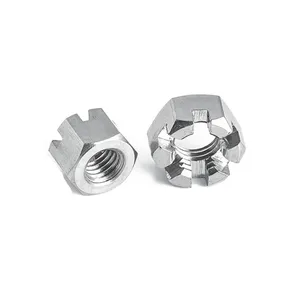The term "hammer nut" refers to a specialized type of fastener commonly used in conjunction with aluminum extrusion profiles or t-slot framing systems. These nuts are designed to slide into the channel of an extrusion and then be turned 90 degrees, locking into place. They are integral in creating a secure joint between the extrusion and another component. The versatility and reliability of hammer nuts make them a staple in various industrial applications.
Types and Characteristics of Hammer Nuts
Within the category of hammer nuts, there are several distinct types, each with unique characteristics. The m3 hammer head t nuts are typically used with smaller profiles and are favored for their compact size and ease of installation in confined spaces. On the other hand, m5 hammer nuts are more robust, suitable for applications requiring a stronger hold, such as in heavy machinery or structural applications. There are also hammer in nuts for wood, which are specifically designed to be used with wooden components, providing a secure fastening without the need for pre-drilled holes. Each type of hammer nut is designed with a specific application in mind, ensuring that users can find the exact fastener they need for their project.
Structure and Operation of Hammer Nuts
The physical structure of a hammer nut includes a flanged base, which increases the contact area with the surface of the extrusion, distributing the load and providing a stronger hold. The central threaded hole is where the bolt or screw is inserted, and the opposite side of the flange features a tapered edge that facilitates the initial insertion into the t-slot. Once inserted, the nut is rotated, and the flange locks against the inner walls of the extrusion. This operation is crucial as it ensures that the nut can be positioned at any point along the extrusion without the need for access to the ends, which is particularly useful in complex assemblies.
Materials and Properties
The materials used in the production of hammer nuts are chosen for their mechanical properties and suitability for the intended application. Stainless steel hammer nuts offer excellent corrosion resistance, making them ideal for use in harsh environments or where there is exposure to chemicals. Carbon steel nuts, on the other hand, provide superior strength and are often used in structural applications where load-bearing capacity is critical. The choice of material is a balance between the requirements for strength, durability, and resistance to environmental factors.
Business Usages and Applications
Hammer nuts are utilized across a variety of business settings. In the automotive industry, they are used to assemble framing systems for manufacturing lines. The retail industry employs them in the construction of display units, where the ability to quickly reconfigure the units is highly valued. In heavy industry, hammer nuts are part of the assembly of large-scale machinery, where their strength and reliability are crucial. These nuts create business value by reducing assembly time, allowing for easy reconfiguration and ensuring the longevity of the connections they form.
Functions and Tasks
The primary function of a hammer nut is to provide a secure fastening point on an aluminum extrusion or t-slot profile. They are designed to accommodate varying bolt sizes, which means they can be used to attach a wide range of components, from lightweight panels to heavy structural elements. The ability to be inserted at any point along the extrusion means that they can be used to add components to an existing structure without the need for disassembly.
Features and Unique Selling Points
One of the distinct features of hammer nuts is their self-aligning capability. As the nut is turned, it automatically aligns with the t-slot, ensuring a straight and secure fit. This feature is particularly beneficial when working in tight spaces where visibility and maneuverability are limited. Another unique selling point is the variety of finishes available, which not only protect the nut from corrosion but can also be matched to the aesthetics of the assembly.
Benefits and Positive Outcomes
The use of hammer nuts brings several benefits to the user. They simplify the assembly process, reducing the time and labor required to build structures. Their reusability makes them a cost-effective solution, as they can be removed and reused in different configurations. Additionally, the secure fastening they provide increases the overall stability and safety of the structure.
How to Use and Install Hammer Nuts
To use a hammer nut, first align it with the mouth of the t-slot and insert it. Once in place, rotate the nut 90 degrees until it is parallel with the slot. For installation, ensure that the surface of the extrusion is clean and that the nut is free from debris to avoid any interference with the threads. Tighten the bolt or screw through the nut until it is firmly in place, ensuring a secure connection.
How to Choose and Maintain Hammer Nuts
Choosing the right hammer nut involves considering the profile size and the load it will bear. For maintenance, periodically check the tightness of the nuts, especially in applications where vibration is present. If any signs of wear or corrosion are visible, replace the nuts to maintain the integrity of the connection.
Target Audience and Meeting Needs
The target audience for hammer nuts includes professionals in the fields of construction, manufacturing, and design engineering. These products meet the needs of this audience by providing a reliable and versatile fastening solution that can be adapted to a wide range of applications and environments.
What are the considerations for selecting the appropriate hammer nut for my project?
When selecting a hammer nut, consider the profile size, load requirements, environmental conditions, and the material of the nut. The correct size ensures compatibility with the extrusion, while the material and finish determine the nut's longevity and resistance to corrosion. Assessing the mechanical demands of your project will guide you to the appropriate hammer head t nut variant.
How do hammer nuts compare to traditional fastening methods?
Hammer nuts offer a distinct advantage over traditional fastening methods due to their ease of installation and adjustability. Unlike welded or riveted joints, hammer in nuts allow for easy disassembly and reconfiguration, making them ideal for modular systems. Their ability to be inserted at any point along the extrusion's t-slot also adds to their flexibility in design and use.
Can hammer nuts be reused, and how does this impact cost-efficiency?
Yes, hammer nuts can be reused, which significantly impacts cost-efficiency. Their durability and reusability make them a cost-effective solution for assembly and reconfiguration of structures. This feature is particularly beneficial in prototyping and iterative design processes common in the automotive and retail industries.










































 浙公网安备 33010002000092号
浙公网安备 33010002000092号 浙B2-20120091-4
浙B2-20120091-4